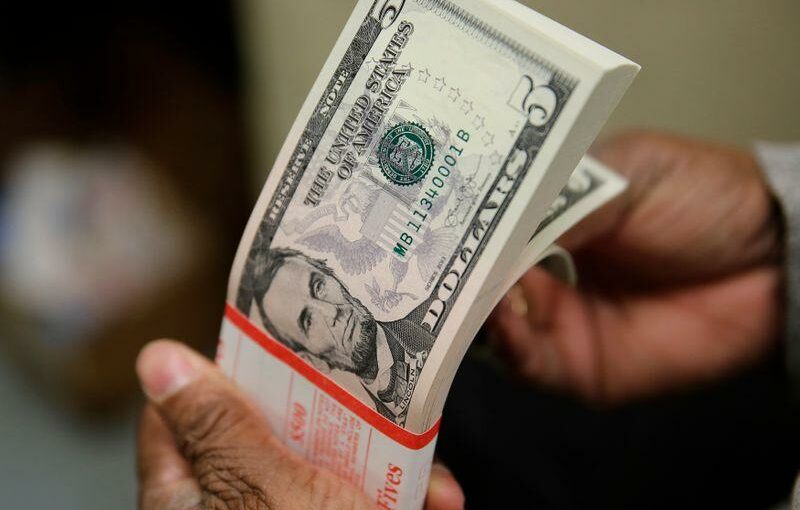NEW YORK (Reuters) – The dollar slipped to a one-month low on Thursday, a day after the U.S. Federal Reserve’s reassurance that interest rate hikes remain distant helped put the brakes on the U.S. currency, which has been rallying for a month now.
The dollar index, which measures the greenback against a basket of six other currencies, was 0.3% lower at 92.005, its lowest since June 29.
The index, which is up 1.6% since the Fed’s June meeting, after a hawkish shift from the U.S. central bank, found little support from U.S. data on Thursday.
Data on Thursday showed that while the U.S. economy grew solidly in the second quarter, boosted by massive government aid, growth fell short of economists’ expectations.
Gross domestic product increased at a 6.5% annualised rate last quarter, the Commerce Department said on Thursday. Economists polled by Reuters had forecast GDP rising at an 8.5% rate last quarter.
“With the dollar already under pressure today as the risk environment stabilises and markets embrace the dovish rhetoric from Fed Chair (Jerome) Powell yesterday, the near 2 percentage point miss in Q2 GDP did little to relieve the greenback,” said Simon Harvey, senior FX market analyst at Monex Europe.
U.S. Treasury yields trended lower after Wednesday’s Fed statement, with inflation-adjusted real yields tumbling to a new low, weighing on the U.S. currency.
Graphic: The real deal:
The market took Wednesday’s Fed announcement as a positive for risk as it leaves the lower rates for longer scenario intact, Brad Bechtel, global head of FX at Jefferies, said in a note.
“Combined with soothing commentary from Chinese officials on what their intentions are regarding IPOs in the US and this regulatory crackdown they embarked on and markets were set up for a nice little rally last night,” Bechtel said.
China stepped up attempts to calm frayed investor nerves after a wild markets rout this week by telling foreign brokerages not to “overinterpret” its latest regulatory actions.
The Australian and New Zealand dollars, reliant on world and Chinese economic growth, edged higher, though the Aussie’s gains were capped by concerns a lengthening COVID-19 lockdown in Sydney would drag on the Australian economy.
The U.S. dollar’s weaker tone and a fall in coronavirus cases in Britain, helped lift the British pound to its highest in over a month against the dollar.
Source: Read Full Article
